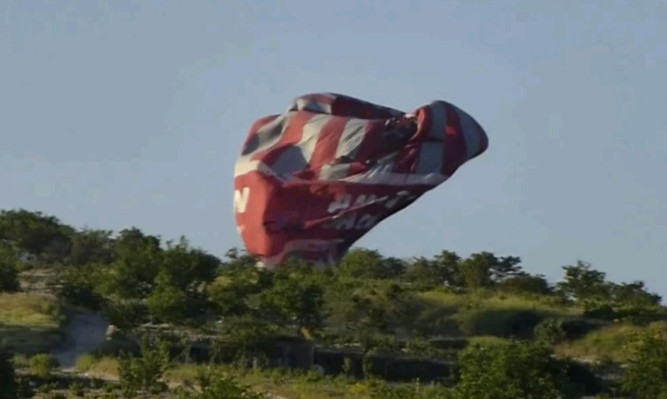Two tourists died and 23 others were injured when two hot air balloons collided in mid-air during a sightseeing tour in Turkey, causing one to crash.
An ascending balloon struck another’s wicker basket above it above central Turkey’s Cappadocia region, causing a tear that sent it plunging to the ground, the state-run Anadolu Agency reported.
The accident – the second fatal one in Cappadocia since operations began more than a decade ago – has put the spotlight on balloon safety and Turkey’s civil aviation agency said it had launched an inquiry into the accident.
As the tours become increasingly popular, there are questions as to whether too many balloons may be launching over Cappadocia at the same time. In 2009, a British tourist was killed and nine other people were injured when two balloons also collided.
https://youtube.com/watch?v=qfpmbyK8ic0%3Frel%3D0
The passengers on the balloon that crashed were mostly tourists from Brazil, Argentina and Spain. The dead were aged 71 and 65.
An American tourist who saw the accident from another balloon said and the crash happened 45 minutes after as many as 100 balloons had taken off for the early morning tour.
“We could hear the radio chatter and we knew something was happening. There was a frantic urgent transmission: ‘Release your parachute! Release your parachute!” said Wayne Ross, whose balloon was 200 yards away from the one that crashed.
“It was probably some 300 meters in the air and it descended increasingly rapidly to the ground,” he said. “There was a large tear in the fabric, probably some 10 to 15 meters long.”
As his balloon flew directly over the crash site, Mr Ross said he saw one person lying on the ground while other passengers were still inside the basket. Several ambulances and trucks were converging on to the scene.
Mr Ross said that he and his wife had said before the accident that some of the balloons were travelling “quite close to each other.”
Halil Uluer, owner of Anatolian Balloons which operated the tour, said it appeared that one of the tourists had died of a heart attack.
The balloons were flying above scenic canyons and volcanic cones of Cappadocia, a popular tourist destination 190 miles from the capital, Ankara. Cappadocia is famed for its “fairy chimney” volcanic cones and subterranean cities carved out of soft stone.
In February, Perth woman Yvonne Rennie was killed in a hot air balloon tragedy while on holiday in Egypt.
